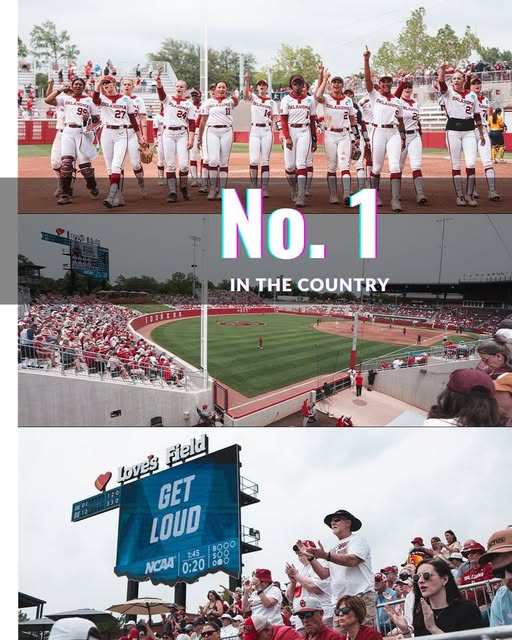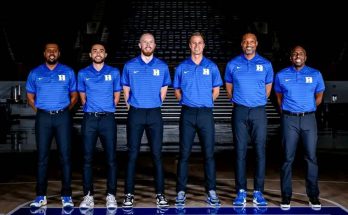Oklahoma softball’s journey to becoming the undisputed No. 1 program in college softball history is a remarkable story of resilience, talent, leadership, and an unwavering commitment to excellence. This is a story not just about winning games or championships but about crafting a legacy that transcends eras, redefining what it means to be a powerhouse in collegiate softball. The Sooners’ rise to dominance is a testament to the perfect storm of vision, culture, and extraordinary athletic ability that allowed them to consistently outshine formidable opponents and elevate the sport itself.
Long before Oklahoma softball became synonymous with winning, the sport was dominated by a handful of storied programs such as UCLA, Arizona, and more recently, Florida State and Washington. These programs had long histories of success, rich traditions, and recruiting power that made them perennial favorites. Against this backdrop, the Sooners had humble beginnings, starting their program in 1975 but gradually evolving over the next few decades. While they showed promise early on, it wasn’t until the late 2000s that Oklahoma truly began to emerge as a force to be reckoned with. The program’s early years were marked by steady growth and moments of brilliance but lacked the sustained dominance that would later define the Sooners.
The turning point for Oklahoma softball came with the arrival of head coach Patty Gasso in 1995. Gasso’s vision for the program was ambitious but clear: to build a team that could compete at the highest level consistently and instill a culture of relentless competitiveness and discipline. What set Gasso apart was her ability to recruit top talent and develop that talent into championship-caliber players while fostering a family-like atmosphere that emphasized teamwork and character. She understood that winning was not just about raw skill but about mental toughness, resilience under pressure, and a collective hunger for success.
Under Gasso’s leadership, the Sooners began to ascend the ranks of college softball. They made regular appearances in the NCAA tournament, and the taste of success bred a stronger desire for more. The program became a magnet for some of the best high school softball players in the country, attracted by Oklahoma’s rising reputation and Gasso’s proven ability to develop stars. The Sooners’ recruiting efforts were relentless, tapping into talent pipelines across the United States and even internationally. This influx of elite players laid the foundation for a dynasty that would dominate college softball for years to come.
The Sooners’ breakthrough moment arrived in 2000 when they captured their first NCAA Women’s College World Series (WCWS) title. This victory was more than just a championship; it was a validation of the program’s growth and a signal to the softball world that Oklahoma was a new powerhouse. The 2000 championship set the tone for the decade ahead, with Oklahoma regularly competing deep into the postseason and challenging the established elite programs. However, what truly cemented the Sooners’ legacy was their ability to sustain this success, turning a championship win into a long-term dynasty.
Throughout the 2010s, Oklahoma’s softball program continued to refine its approach, focusing on the development of well-rounded players who could perform under pressure and adapt to the evolving game. The Sooners became known for their explosive offense, dominating pitching staff, and exceptional defensive play. Their style was aggressive but calculated, blending power hitting with speed on the bases and an unyielding competitive spirit. The team’s approach to the game reflected the ethos instilled by Gasso — hard work, resilience, and a refusal to back down from any challenge.
A key factor in Oklahoma’s continued success was its ability to produce and attract some of the most decorated players in college softball history. Stars like Lauren Chamberlain, Keilani Ricketts, Paige Parker, and Jocelyn Alo became household names, leading the Sooners to multiple WCWS appearances and national championships. These players didn’t just excel statistically; they became leaders on and off the field, embodying the team’s core values and inspiring future generations of Sooners. The program’s commitment to player development extended beyond athleticism — players left Oklahoma as strong individuals prepared for success in life beyond softball.
The Sooners’ dominance was also characterized by their remarkable consistency. Unlike many programs that might have flashes of greatness followed by downturns, Oklahoma remained a constant presence at the pinnacle of college softball. From the early 2010s onward, the Sooners qualified for the NCAA tournament every single year, reached the WCWS with regularity, and won multiple national titles. Their sustained excellence was a product of meticulous preparation, a deep understanding of the game’s nuances, and a culture that demanded nothing less than perfection.
Oklahoma’s rivalry with other top programs became one of the defining aspects of college softball during this period. Matchups against teams like UCLA, Florida State, and Washington became marquee events, drawing large crowds and national attention. These games were more than just contests; they were battles for supremacy that often had national title implications. Oklahoma’s ability to rise to the occasion in these high-pressure situations further distinguished them as the gold standard in college softball. Their poise, strategic execution, and mental toughness were unmatched, allowing them to prevail in close games and come back from deficits when others might falter.
The Sooners’ winning culture extended beyond the field as well. The program emphasized academic excellence and community engagement, creating a holistic environment for student-athletes. Oklahoma softball players were not only champions on the diamond but also leaders in the classroom and the community. This commitment to integrity and personal development attracted recruits who wanted to be part of something bigger than just winning games. The culture of accountability and respect established by the coaching staff permeated every aspect of the program, contributing to its long-term sustainability.
The facilities and resources available to Oklahoma softball also played a crucial role in their dominance. The state-of-the-art OU Softball Complex provided a top-tier training environment, fostering player development and team cohesion. The university’s investment in the program signaled its commitment to maintaining Oklahoma’s position as a softball powerhouse. Access to excellent training facilities, sports medicine, and strength and conditioning programs allowed the Sooners to maximize their athletic potential and minimize injuries, keeping the team competitive year after year.
Oklahoma’s rise to the top coincided with the growth of college softball’s popularity nationwide. Increased television coverage, social media presence, and fan engagement helped elevate the sport, and Oklahoma often found itself at the center of this growing spotlight. Their success helped bring attention not just to their program but to college softball as a whole, inspiring young athletes and fans alike. The Sooners became ambassadors for the sport, showcasing the excitement, skill, and drama that softball offers.
The Sooners’ legacy was further solidified by their record-breaking achievements. Oklahoma softball set numerous NCAA records for wins, home runs, and consecutive postseason appearances. Their championship count, surpassing even the most decorated programs in history, placed them firmly at the summit of college softball greatness. These accomplishments were not merely statistics but a reflection of the program’s relentless pursuit of excellence and the high standards it set for itself.
Behind every championship and every record was a story of teamwork and sacrifice. The Sooners’ ability to integrate star players with role players, create chemistry, and execute under pressure was unmatched. Players bought into the team-first mentality, understanding that individual glory was secondary to the collective goal of winning championships. This mindset was nurtured by the coaching staff’s emphasis on humility, resilience, and continuous improvement.
The Sooners also showed remarkable adaptability over the years. College softball evolved, with changes in rules, playing styles, and competitive balance, but Oklahoma remained ahead of the curve. The coaching staff’s willingness to innovate tactically and strategically ensured the team stayed competitive no matter the changes in the sport. Whether it was incorporating advanced analytics, adjusting pitching rotations, or refining hitting approaches, the Sooners embraced innovation while honoring the fundamentals.
As the Sooners continued to collect titles and accolades, their influence extended into the professional ranks and international competition. Many former Oklahoma players went on to have successful careers in professional softball leagues and represented their countries in international tournaments, including the Olympics. Their success on the global stage further enhanced Oklahoma’s reputation as a breeding ground for elite softball talent and raised the program’s profile worldwide.
The narrative of Oklahoma softball is one of transformation—from a program that once sought recognition to an undisputed dynasty that redefined the sport. Their journey was marked by landmark victories, heartbreaking defeats, and lessons learned along the way. What distinguishes the Sooners is not just their ability to win but their capacity to build a lasting legacy rooted in excellence, integrity, and a passion for the game.
Ultimately, Oklahoma softball’s story is about the human spirit’s ability to dream big and work relentlessly to achieve greatness. It’s about how a program rose above the giants that preceded it and carved out its own place in history through perseverance, talent, and leadership. The Sooners’ dominance is not a fleeting phenomenon but a lasting legacy that will inspire generations to come, reminding everyone that with vision, heart, and dedication, greatness is attainable. Oklahoma softball did not just become the No. 1 program in college softball history—they became the standard by which all others are measured.



